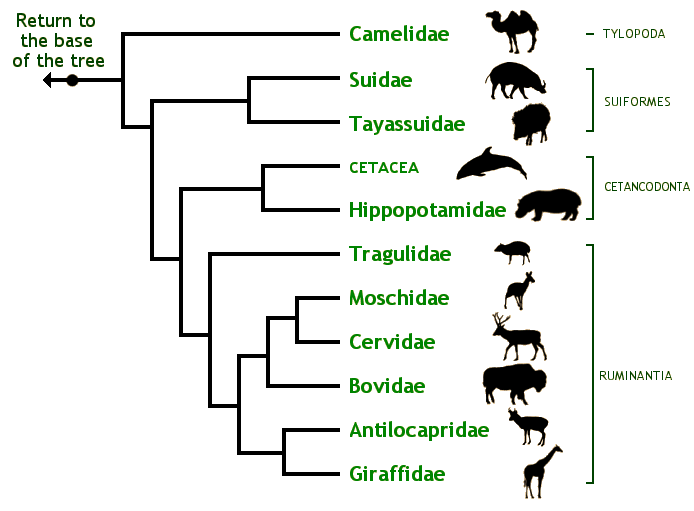Classification
Domain- Eukarya
The Rhodesian giraffe is in the domain Eukarya because the
cells contain a nucleus and it has membrane bound organelles.
Kingdom- Animalia
Animalia is the kingdom the Rhodesian giraffe belongs to because it
is a multicellular heterotroph without a cell wall, just like the
Albacore Tuna.
Phylum- Chordata
Members of the phylum Chordata are triploblastic; having three cell
layers, bilateral symmetry, and are deuterostomes; anus
developing first. Another animal within this phylum is the
Clupea
pallasii.
Class- Mammalia
Members of the class Mammalia possess hair/fur, a neocortex, which
aids sight and hearing in mammals, three
middle ear bones, and sweat glands. An animal classified under this
class is the
Yellow Mongoose.
Order- Artiodactyla
Members of the order Artiodactyla are classified as even-toed hoofed
animals, such as the
domestic goat and the
camel. An example of an odd-toed ungulate (hoofed animal) is a
horse.
Family: Giraffidae
The Rhodesian giraffe is classified as Giraffidae because they are
ruminant
artiodactyl mammals that are commonly found in sub-Saharan Africa.
Genus: Giraffa
Members of the genus Giraffa are mammals in the Giraffidae family.
The Rhodesian Giraffe is one of seven subspecies included in this
genus.
Species: G. camelopardalis
The Rhodesian giraffe is classified under this species because it is
an African even-toed ungulate mammal. The species name refers to the
patches of color on its fur and its camel-like appearance.
Sub-species: G. c. thornicrofti
The Rodesian giraffe is classified under this subspecies
because it can only mate with animals of the same subspecies. Unique
traits of the Rhodesian Giraffe include its distinctive spots,
color, and geographically isolated orgin (Tutchings et al., 2013).
Phylogenetic Trees:
The phylogenetic tree above displays the Order Artiodactyla to demonstate related even-toed ungulate species. It includes four well-established suborders (Huffman, 2011). Giraffes are placed in the ruminantia section because of their specialized digestive tract. Giraffe's closest living relative is the Okapi, which is under Antilocapridae.

In the above image, one should be able to recognize the different
subspecies of giraffes (depicted by the different colors). From there,
each species is broken down into multiple
branches. The Thornicroft giraffe would be just one of the branches
off of G. c. giraffa, or South African. Another subspecies to
compare to would be the Reticulated giraffe or
G. c. reticulata.
Home
